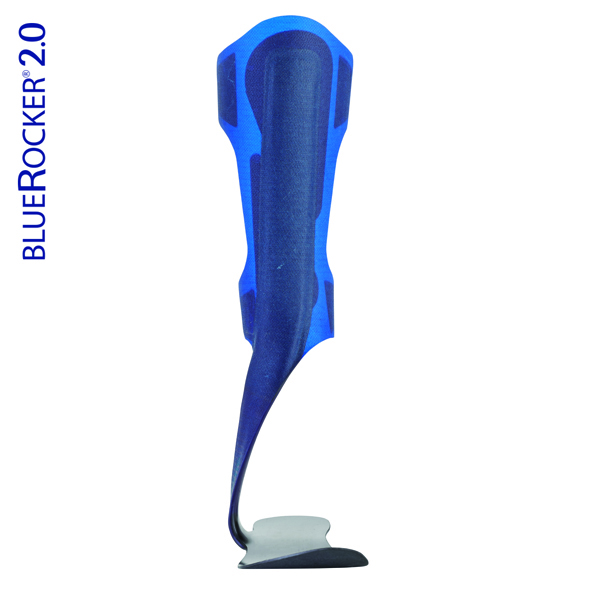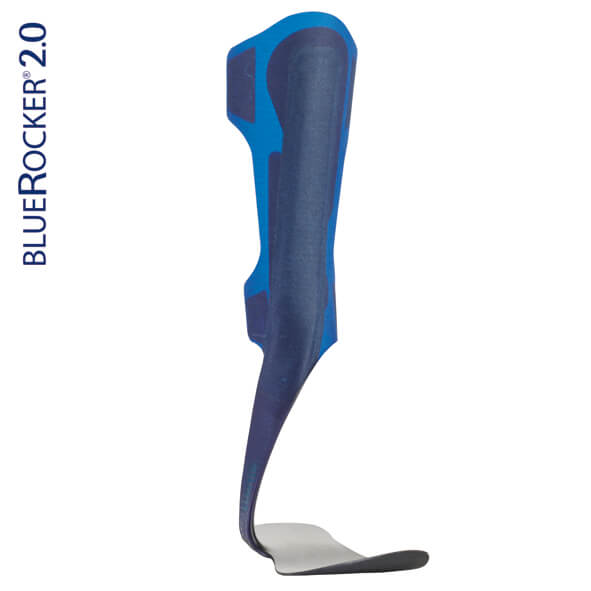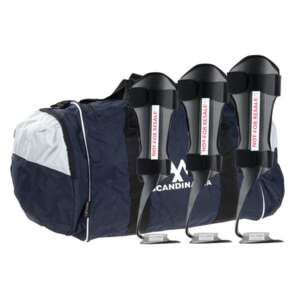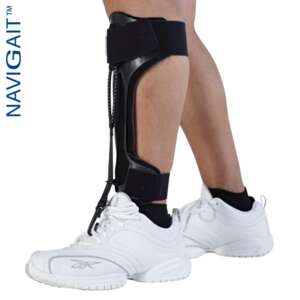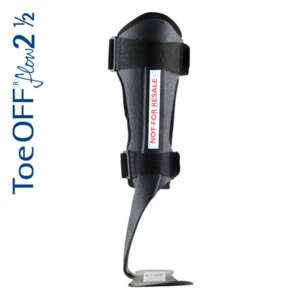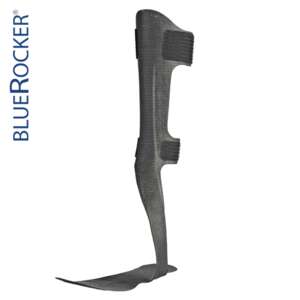BlueROCKER® 2.0
BlueROCKER® is designed to manage foot drop in conditions such as Stroke, Multiple Sclerosis, Post Polio Syndrome, Muscular Dystrophy, Spinal Cord Injuries, Traumatic Brain Injuries, Guillian-Barre Syndrome, Charcot-Marie-Tooth, Myelomeningocele, Neuropathy or Cerebral Palsy. BlueROCKER® 2.0 has a heel height between 12 - 15 mm depending on size.
Recommended Range Of Application
BlueROCKER® is designed to support gait in conditions such as Posterior Tibialis Tendon Dysfunction (PTTD) and toe amputations. BlueROCKER® can also be used for partial foot amputations, most proximal level is Chopart.
Contraindications
BlueROCKER® should not be used when patients present with foot and/or leg ulcers, moderate to severe edema, moderate to severe foot deformities, severe proximal deficits (e.g. quadriceps spasticity, genu valgum or varum, genu recurvatum), severe spasticity.
Other
More about ftting and product selection can be found in the Allard AFO Professional Instruction.
| Item No. | Model | Size | L/R | Shoe Size | Footplate Length | Height |
|---|---|---|---|---|---|---|
| 289401010 | BlueROCKER 2.0 | X-Small | Left | 32-35 | 21 cm | 36 cm |
| 289401011 | BlueROCKER 2.0 | Small | Left | 35-38 | 23 cm | 38 cm |
| 289401012 | BlueROCKER 2.0 | Medium | Left | 38-42 | 24,5 cm | 40,5 cm |
| 289401013 | BlueROCKER 2.0 | Large | Left | 42-45 | 27 cm | 43 cm |
| 289401014 | BlueROCKER 2.0 | X-Large | Left | >45 | 28,5 cm | 45 cm |
| 289402010 | BlueROCKER 2.0 | X-Small | Right | 32-35 | 21 cm | 36 cm |
| 289402011 | BlueROCKER 2.0 | Small | Right | 35-38 | 23 cm | 38 cm |
| 289402012 | BlueROCKER 2.0 | Medium | Right | 38-42 | 24,5 cm | 40,5 cm |
| 289402013 | BlueROCKER 2.0 | Large | Right | 42-45 | 27 cm | 43 cm |
| 289402014 | BlueROCKER 2.0 | X-Large | Right | >45 | 28,5 cm | 45 cm |
| 289421010 | BlueROCKER 2.0 with D-ring Straps | X-Small | Left | 32-35 | 21 cm | 36 cm |
| 289421011 | BlueROCKER 2.0 with D-ring Straps | Small | Left | 35-38 | 23 cm | 38 cm |
| 289421012 | BlueROCKER 2.0 with D-ring Straps | Medium | Left | 38-42 | 24,5 cm | 40,5 cm |
| 289421013 | BlueROCKER 2.0 with D-ring Straps | Large | Left | 42-45 | 27 cm | 43 cm |
| 289421014 | BlueROCKER 2.0 with D-ring Straps | X-Large | Left | >45 | 28,5 cm | 45 cm |
| 289422010 | BlueROCKER 2.0 with D-ring Straps | X-Small | Right | 32-35 | 21 cm | 36 cm |
| 289422011 | BlueROCKER 2.0 with D-ring Straps | Small | Right | 35-38 | 23 cm | 38 cm |
| 289422012 | BlueROCKER 2.0 with D-ring Straps | Medium | Right | 38-42 | 24,5 cm | 40,5 cm |
| 289422013 | BlueROCKER 2.0 with D-ring Straps | Large | Right | 42-45 | 27 cm | 43 cm |
| 289422014 | BlueROCKER 2.0 with D-ring Straps | X-Large | Right | >45 | 28,5 cm | 45 cm |
-
Instructions for Use - User Instruction AllardAFO (883.54 KB)
-
Instructions for Use - Professional Instruction AllardAFO (2.16 MB)
-
Instructions for Use - Professional Instruction DE AllardAFO (2.13 MB)
-
Instructions for Use - Professional Instruction FR AllardAFO (1.98 MB)
-
Instructions for Use - Professional Instruction IT AllardAFO (2.15 MB)
-
Instructions for Use - Professional Instruction ES AllardAFO (2.1 MB)
-
Brochure AllardAFO (1.36 MB)
-
Return form AllardAFO (229.84 KB)
-
Brochure Partial Foot (1.18 MB)


Author: Danielsson A, Stibrant Sunnerhagen K.
Source: J Rehabil Med 2004; 36: 165–168
Author: ANI MNATSAKANIAN BS et al.
Source: Muscle Nerve 000:000–000, 2016
Author: Altschuck N. et al
Author: Roberts Joffe, Fredrik Forsberg, Henrik Lycksam, Anders Sjögren
Source: ICTMS 2017 - 3rd International Conference on Tomography of Materials and Structures, 26-30 June 2017, Lund, Sweden
Author: Shuman BR, Espesito ER
Source: Journal of Biomechanical Engineering. JANUARY 2022, Vol. 144 / 011004-1
Author: Shuman et al.
Source: Journal of NeuroEngineering and Rehabilitation (2023) 20:11
Author: Megan M. Grunst , Robert C. Wiederien1 and Jason M.
Source: A systematic review Prosthetics and Orthotics International 2023
Author: Burke K1,2, Cornell K1,3, Swartz Ellrodt A1,2, Grant N1,2, Paganoni S2,4,5 and Sadjadi R1,2*
Source: CMT study.2021
Preliminary research suggests the use of a kinetic return ankle foot orthosis is associated with small but significant shortterm increases in calf circumference, which in turn suggests this type of device might reduce or protect against the risk of disuse muscle atrophy.
Author: Robert H. Meier, CO, BOCO; David C. Ruthsatz, CO, CPA; and Daniel, Cipriani, PT, PhD.
Source: Lermagazine 2014

